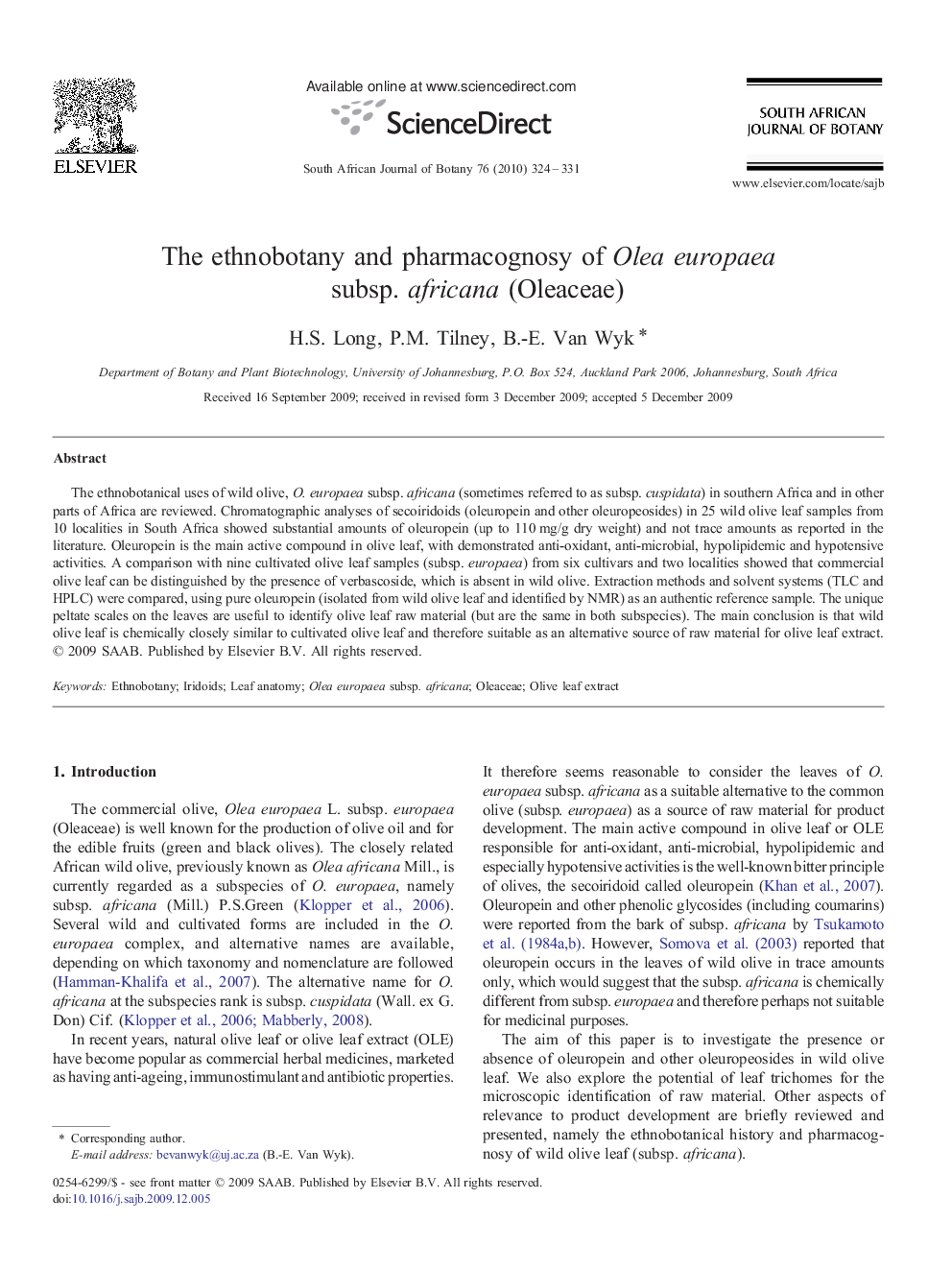| Article ID | Journal | Published Year | Pages | File Type |
|---|---|---|---|---|
| 4521291 | South African Journal of Botany | 2010 | 8 Pages |
The ethnobotanical uses of wild olive, O. europaea subsp. africana (sometimes referred to as subsp. cuspidata) in southern Africa and in other parts of Africa are reviewed. Chromatographic analyses of secoiridoids (oleuropein and other oleuropeosides) in 25 wild olive leaf samples from 10 localities in South Africa showed substantial amounts of oleuropein (up to 110 mg/g dry weight) and not trace amounts as reported in the literature. Oleuropein is the main active compound in olive leaf, with demonstrated anti-oxidant, anti-microbial, hypolipidemic and hypotensive activities. A comparison with nine cultivated olive leaf samples (subsp. europaea) from six cultivars and two localities showed that commercial olive leaf can be distinguished by the presence of verbascoside, which is absent in wild olive. Extraction methods and solvent systems (TLC and HPLC) were compared, using pure oleuropein (isolated from wild olive leaf and identified by NMR) as an authentic reference sample. The unique peltate scales on the leaves are useful to identify olive leaf raw material (but are the same in both subspecies). The main conclusion is that wild olive leaf is chemically closely similar to cultivated olive leaf and therefore suitable as an alternative source of raw material for olive leaf extract.
